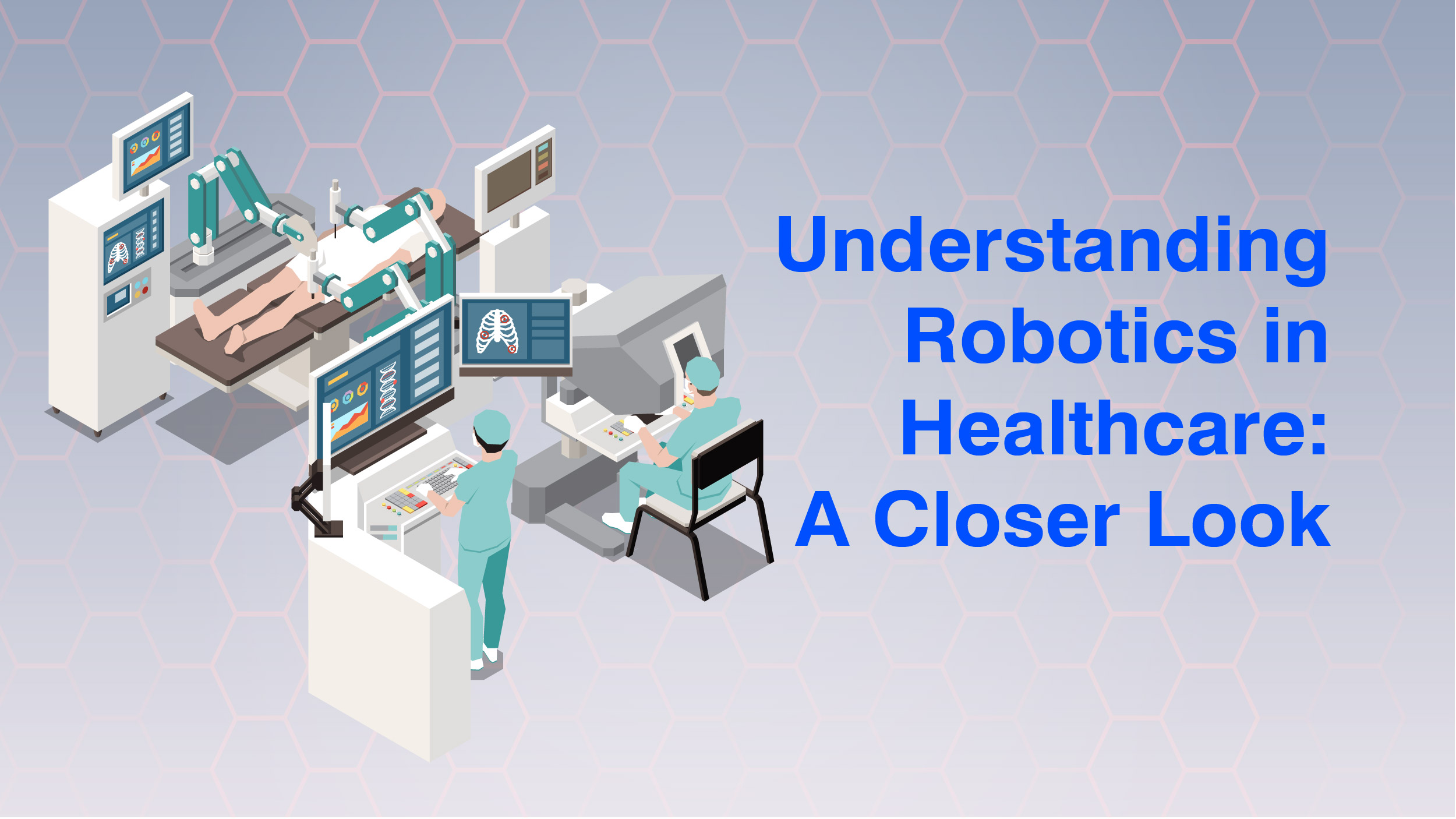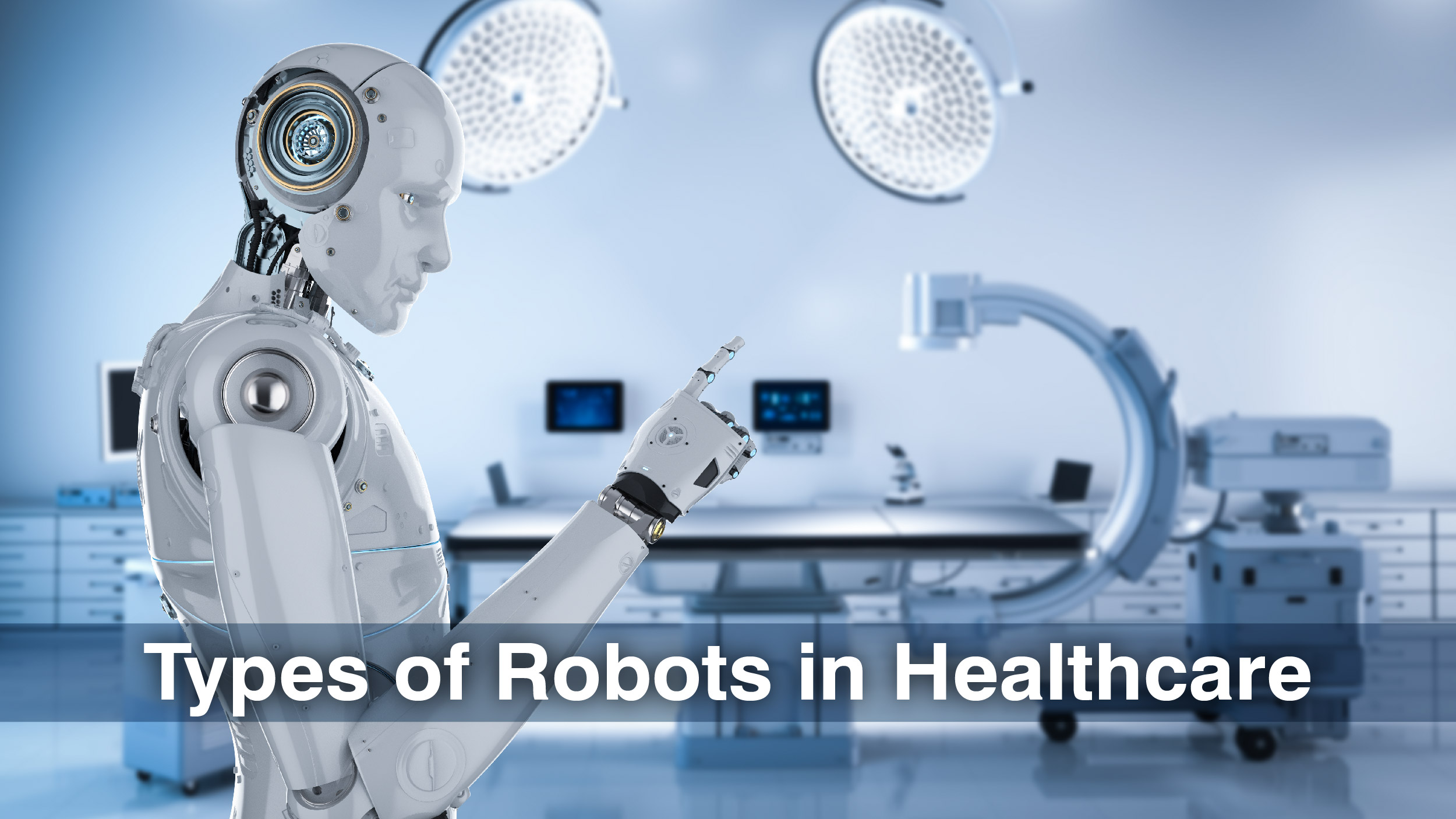Can robots revolutionize healthcare as we know it? In recent years, the integration of robotics into the healthcare sector has sparked a profound transformation in the way we diagnose, treat, and care for patients. From surgical procedures performed with remarkable precision to patient companions providing emotional support, the realm of robotics in healthcare is expanding at an unprecedented pace.
Let’s delve into the promising world of robots used in healthcare where we will take a look at cutting-edge innovations and applications that are reshaping the future of medicine and patient well-being.
Understanding Robotics in Healthcare: A Closer Look

Robotics in healthcare involves using robotic systems and technologies to assist healthcare professionals, improve patient outcomes, and streamline healthcare processes. Applications include robotic surgery, rehabilitation, diagnostics, telemedicine, and medication management.
Robotic surgery enhances precision and reduces invasiveness. Rehabilitation robots aid patients in regaining mobility and strength through tailored exercises. Diagnostic robots automate tasks like image analysis and laboratory testing. Telemedicine robots enable remote consultations. Medication management robots reduce errors in dispensing and administering medications.
Benefits of Robotics in Healthcare
Currently, IoMT has an immense impact on the medical world and is deployed at home, on the body, in the community, and in hospitals. Whereas, robotics in healthcare, or “health robots,” are capable of providing high-quality patient care, effective clinical procedures, and a secure environment for both patients and medical professionals.
Here are some more benefits that are reducing manual efforts and increasing the precision of patient care:
● Safe Work Environment
Robotics in healthcare has brought along service robots that can clean and disinfect patient rooms. It is no secret that hospitals carry with them the possibility of pathogen exposure. This is where service robots come into play.
Service robots can bring in medical supplies, sheets, etc., to help keep healthcare workers far away from contracting any infections. This significantly helps in minimizing the risk of acquiring HAIs (hospital-acquired infections) and thus restricting pathogen exposure. The physical burden on healthcare workers or caregivers is lowered by the assistance of social robots with heavy lifting, such as moving beds or patients.
● Operational Efficiencies
Routine jobs can be streamlined, physical demands on human workers are decreased, and procedures become reliable thanks to service robots. Rapid sanitization of hospital rooms is made possible by mobile cleaning and disinfection robots. These robots can also keep track of inventory and place timely orders, ensuring supplies, equipment, and medication are where they are needed.
● High-Quality Patient Care
Robotic medical assistants help with minimally invasive surgeries, individualized and routine monitoring for patients with chronic conditions, intelligent therapies, and social interaction for elderly patients. Additionally, when robots reduce workloads, nurses and other caregivers can contact patients more personally and empathically, which can boost long-term well-being.
● Collection and Delivery
There are several fields where robotic technology is present that directly impact patient care. They can be used to sanitize operating rooms and patient rooms, lowering risks for both patients and medical staff. They can perform sample collection, transportation, analysis, and preservation tasks in laboratories.
In pharmaceutical labs, robots also prepare and deliver medicines. In large organizations, robotic carts operate elevators and move through automatic doors to transport food and even bed linens from one floor to another.
Types of Robots in Healthcare

On a scale of 1 to 10, how likely are you to trust your life to a robotic surgeon? In the world of healthcare, where demand for medical robots within the field of biomedical engineering is booming, it is becoming more and more common, despite some people’s discomfort with the concept of a robot conducting their surgery or consoling them in stressful situations.
Engineers have solid reasons to create medical robots for use in the healthcare industry. Robots work tirelessly and never sway in comparison to humans. They are able to move precisely, even outside of the human range of motion, and remain with patients for however long is required. Additionally, they can automate routine or mediocre operations while leaving high-level work to humans.
The use of robotics in healthcare and medicine has advanced significantly since its inception in the operating room around three decades ago. Today, robots are helping in a variety of medical fields. Here are the types of robots being used in different medical fields:
● Hospital Robots
Medical practitioners, nurses, and surgeons can reduce their daily workload by using hospital robots to perform a variety of tasks. In the hospital, this involves dispensing medicines, lab samples, and other sensitive things like patient data.
An amazing example of hospital robots is the TUG. The TUG is an autonomous mobile robot developed by Aethon, a US robotics business, that can complete all of these activities while saving time and money and allowing healthcare professionals to focus on patient care.
● Surgical Robots
Since the 1980s, robots have been used in healthcare, initially to help doctors in the operating theater. Today’s operating rooms are increasingly becoming places where robots perform surgery.
Robot-assisted surgery has several advantages compared to conventional surgeries. Robots provide dependable operative support for doctors and surgical teams. For example, during the implantation of screws in a decompression surgery of the spine, robots can hold instruments and plant screws precisely on the target as they can stay still far better than humans
● Therapeutic Robots
In the realm of robotics in healthcare, recovery following a stroke, paralysis, traumatic brain injury, or multiple sclerosis can be facilitated with therapeutic robots. These AI-powered robots with depth cameras can measure a patient’s progress more precisely than a human eye by monitoring the degree of motion in various postures while they perform the treatments that have been recommended for them. They can communicate with patients to offer a sense of purpose and direction.
● Social Robots
Through their ability to socially interact, encourage patients, and show patients how to accomplish certain physical skills, social robots provide patients—particularly the elderly and young patients—in the hospital setting with cognitive support. These more human-like robots are capable of carrying out their duties with a high degree of autonomy and doing so while communicating with patients and clinical staff in a natural manner.
● Modular Robots
A modular robot is a robotic system made up of parts and modules that have fundamental robotic characteristics and may be put together and reconfigured to execute robotic tasks.
Modular robots can be programmed to do a variety of tasks and improve other systems. These include prosthetic robotic arms and legs and therapeutic exoskeleton robots in the field of healthcare.
● Exoskeletons
Wearable robotic devices that are controlled by computer boards to operate a system of motors, pneumatics, levers, or hydraulics and restore mobility are known as robotic exoskeletons or powered exoskeletons.
By placing sensors on the patient’s skin, the exoskeleton can sense electrical impulses in their body and react by moving their joints. It applies physical therapy to assist people in recovering from lower-body issues, such as paralysis or strokes.
Challenges for robotics in healthcare
Robotics in healthcare is nothing short of a double-edged sword; it comes with its own set of advantages and disadvantages. Although deploying robots to complete tasks in the healthcare industry has many benefits, there is a lot of scope for blunders and malfunctions as well. The capital investment for deploying robotics in healthcare is hefty, and modern robot-assisted surgeries can cost millions of dollars.
It raises some alarming questions, like who will be held liable for errors committed by robots? The issue is that no one can be especially blamed. It’s a legally ambiguous topic, which has led to several arguments, especially in the area of ethics. If you have to deal with robots, you’ll have to spend a significant amount of time training medical staff on how to use them.
Wrapping it up
Robotics is an industry that is constantly evolving. The urge to progress beyond our limitations has driven the development of most of the technology used by humanity today and in the future.
Robots have the potential to improve the overall quality of care and also completely transform end-of-life care. It can enable patients to be independent and on their own for a longer period of time and decrease the need for intensive care, nursing facilities, etc.
Moreover, AI is making it possible for robots to go even further and interact socially with humans to keep older minds sharp through AI-assisted conversations and other social interactions.
Along with improvements in machine learning, data analytics, computer vision, and other technologies, health robots will keep developing. All kinds of robots will continue to develop so they can carry out operations on their own, effectively, and precisely.
Medical robots are just getting started. The new discoveries in the future that enable intuitive healing based on cutting-edge technology are all set to dramatically transform the healthcare industry.



